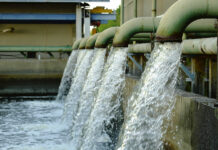
ISLAMABAD: Dr. Hafiz Pasha’s new book ‘Growth and Inequality in Pakistan’ has reported Khyber-Pakhtunkhwa registered the highest average growth rate of 5.1 percent amongst provinces in the last four years.
As per Dr. Pasha’s book, KP outpaced the national average growth rate of 4.5 percent during the last four years, reported Express Tribune.
Sindh which had maintained the highest pace of economic growth during 2000 to 200, stunted after 2008 when Pakistan People’s Party came into power. Also, Balochistan was unable to sustain a growth rate of over 3 percent in the last 15 years.
Punjab came second, followed by Sindh and Balochistan in last four years suggested Dr. Pasha’s book. This book has broken Pakistan’s economic growth into provincial performance and the book declares Punjab constituted a share of 54 percent of national GDP during 2016-17, followed by Sindh at 30 percent, KP at 13 percent and Balochistan at 3 percent.
KP’s economic growth was attributed more to its structure than to the policies of the provincial government. According to Dr. Pasha’s research in his book, the growth was more due to major increase in domestic and foreign remittance inflows in KP.
Also, the book observed 20 percent of household incomes is provided for by remittances compared to 10 percent in Punjab and 3 percent in Balochistan and Sindh respectively.
Dr. Pasha’s book believes KP’s economy is more service oriented, which is largely driven by remittances and has a restricted native production base.
Transport sector in KP exhibited higher growth on back of Afghan transit trade and NATO supply movement. Also, the book observed ownership of dwellings sub-sector reported a high-growth rate of 6.5 percent largely due to investments in housing from home remittances.
KP’s economy growth has almost averaged 5 percent in the last fifteen years, as per Dr. Pasha’s book.
Punjab, which came second reported 4.6 percent average growth rate since 2013 compared to 2.9 percent from 2008 to 2012-13. Dr. Pasha said agriculture sector had a critical role in Punjab’s economic growth, but it declined to 2 percent compared to 4.5 percent during the 1990’s.
Sindh according to Dr. Pasha’s book economic growth averaged at 4.2 percent from 2013-14 to 2016-17. It noted Sindh’s economy had reported exceptional growth during the Musharraf era.
According to the book, worsening law and order situation in Karachi after 2008 contributed to a severe reversal in economic growth of Sindh falling from 6 percent earlier to below 2 percent after 2008.
This translates to a loss of regional economy of around Rs400 billion, as per Dr. Pasha. Industrial growth regressed in Sindh since 2008 and agriculture sector also followed suit by performing abysmally in the last fifteen years with an average growth rate of less than 2 percent.
The book observed Sindh’s service sector had been deeply affected by periodic closures and lack of security.
Balochistan on the other hand registered the lowest economic growth amongst the four provinces with an average growth rate of 3.6 percent in last four years.
Dr. Pasha’s book observed due to increased insurgency and counter-operations by the army had contributed to less investment and economic activity. Also, the provinces real-per capita income also registered a fall in some years.
But Balochistan experienced a surge in production of vegetables and fruits, which made it the fastest growing agricultural province in this sector.






